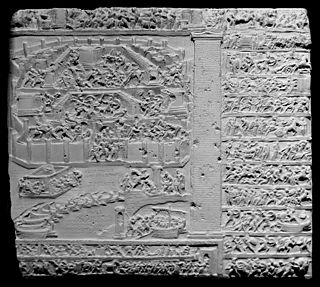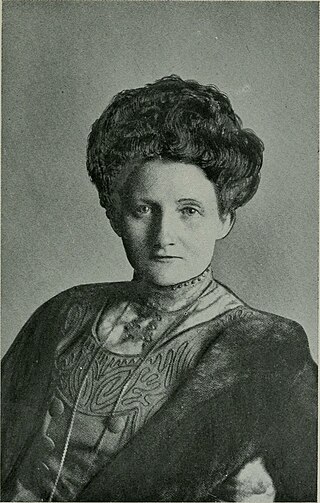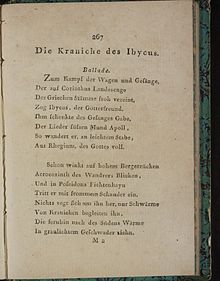
Robin Hood is a legendary heroic outlaw originally depicted in English folklore and subsequently featured in literature, theatre, and cinema. According to legend, he was a highly skilled archer and swordsman. In some versions of the legend, he is depicted as being of noble birth, and in modern retellings he is sometimes depicted as having fought in the Crusades before returning to England to find his lands taken by the Sheriff. In the oldest known versions, he is instead a member of the yeoman class. Traditionally depicted dressed in Lincoln green, he is said to have stolen from the rich to give to the poor.

In Greek mythology, Scylla is a legendary monster who lives on one side of a narrow channel of water, opposite her counterpart Charybdis. The two sides of the strait are within an arrow's range of each other—so close that sailors attempting to avoid Charybdis would pass dangerously close to Scylla and vice versa.
Ibycus was an Ancient Greek lyric poet, a citizen of Rhegium in Magna Graecia, probably active at Samos during the reign of the tyrant Polycrates and numbered by the scholars of Hellenistic Alexandria in the canonical list of nine lyric poets. He was mainly remembered in antiquity for pederastic verses, but he also composed lyrical narratives on mythological themes in the manner of Stesichorus. His work survives today only as quotations by ancient scholars or recorded on fragments of papyrus recovered from archaeological sites in Egypt, yet his extant verses include what are considered some of the finest examples of Greek poetry.

Hanns Eisler was a German-Austrian composer. He is best known for composing the national anthem of East Germany, for his long artistic association with Bertolt Brecht, and for the scores he wrote for films. The Hochschule für Musik Hanns Eisler Berlin is named after him.

Heinz Georg Kramm, known professionally as Heino, is a German singer of Schlager and traditional Volksmusik. Having sold a total of over 50 million records, he is one of the most successful German musicians of all time.
The Thesaurus Linguae Graecae (TLG) is a research center at the University of California, Irvine. The TLG was founded in 1972 by Marianne McDonald with the goal to create a comprehensive digital collection of all surviving texts written in Greek from antiquity to the present era. Since 1972, the TLG has collected and digitized most surviving literary texts written in Greek from Homer to the fall of Constantinople in 1453 CE, and beyond. Theodore Brunner (1934–2007) directed the project from 1972 until his retirement from the University of California in 1998. Maria Pantelia, also a classics professor at UC Irvine, succeeded Theodore Brunner in 1998, and has been directing the TLG since. TLG's name is shared with its online database, the full title of which is Thesaurus Linguae Graecae: A Digital Library of Greek Literature.

The sack of Baltimore took place on 20 June 1631, when the village of Baltimore in West Cork, Ireland, was attacked by pirates from the Barbary Coast of North Africa – the raiders included Dutchmen, Algerians, and Ottoman Turks. The attack was the largest by Barbary slave traders on Ireland.

Stesichorus was a Greek lyric poet native of today's Calabria. He is best known for telling epic stories in lyric metres, and for some ancient traditions about his life, such as his opposition to the tyrant Phalaris, and the blindness he is said to have incurred and cured by composing verses first insulting and then flattering to Helen of Troy.

Weimar Classicism was a German literary and cultural movement, whose practitioners established a new humanism from the synthesis of ideas from Romanticism, Classicism, and the Age of Enlightenment. It was named after the city of Weimar, Germany, because the leading authors of Weimar Classicism lived there.

The "Ballade des dames du temps jadis" is a Middle French poem by François Villon that celebrates famous women in history and mythology, and a prominent example of the ubi sunt? genre. It is written in the fixed-form ballade format, and forms part of his collection Le Testament in which it is followed by the Ballade des seigneurs du temps jadis.

Helicarionidae is a family of air-breathing land snails or semi-slugs, terrestrial pulmonate gastropod mollusks in the superfamily Helicarionoidea.

James Augustine "Butch" Moore was an Irish singer and a showband icon during the 1960s.

Bosse is a German rock singer and guitarist. Bosse is also the name of his backup band.

"Der Handschuh" is a ballad by Friedrich Schiller, written in 1797, the year of his friendly ballad competition with Goethe. Other ballads written that year include Schiller's "Der Gang nach dem Eisenhammer", "Die Kraniche des Ibykus", "Der Ring des Polykrates", "Ritter Toggenburg", "Der Taucher", and Goethe's "Die Braut von Korinth", "Der Gott und die Bajadere", "Der Schatzgräber (Goethe)", "The Sorcerer's Apprentice".
Chow Chung-cheng was a Chinese artist known for her finger painting and autobiographical books.
Stella Kunkat is a German actress.
Ode to Polycrates is an ancient Greek poem written by Ibycus and dedicated to Polycrates, tyrant of Samos. It was composed some time in the middle of the 6th century BC and displays close similarities to the work of Stesichorus.
Ibycus is a genus of air-breathing semi-slugs, in the family Helicarionidae.

Balladenjahr refers to the year 1797 in the history of German literature, in which many of the best-known ballads of Johann Wolfgang von Goethe and Friedrich Schiller originated within a few months, such as Goethe's "Der Zauberlehrling" and Schiller's "Der Ring des Polykrates", "Der Taucher", "Der Handschuh", "Der Gang nach dem Eisenhammer", "Ritter Toggenburg", and "Die Kraniche des Ibykus".

Lulu von Strauss und Torney (1873–1956) was a German poet and writer. Best remembered for her ballads, she also wrote historical fiction with rural settings in northwest Germany.














